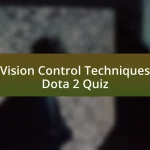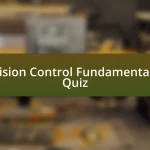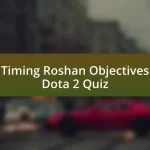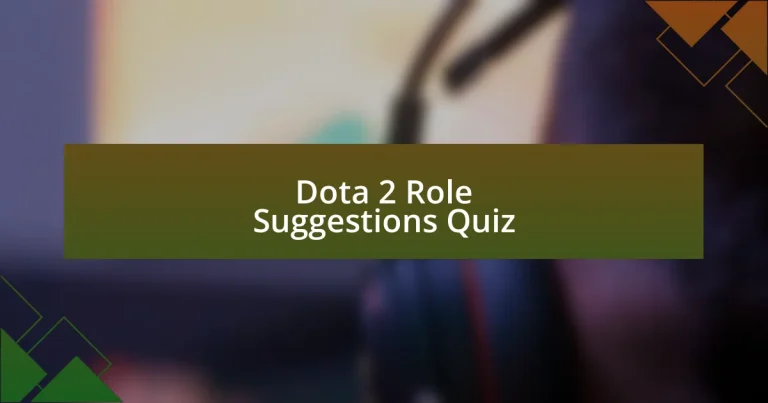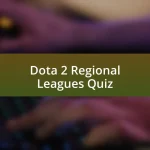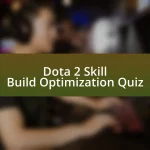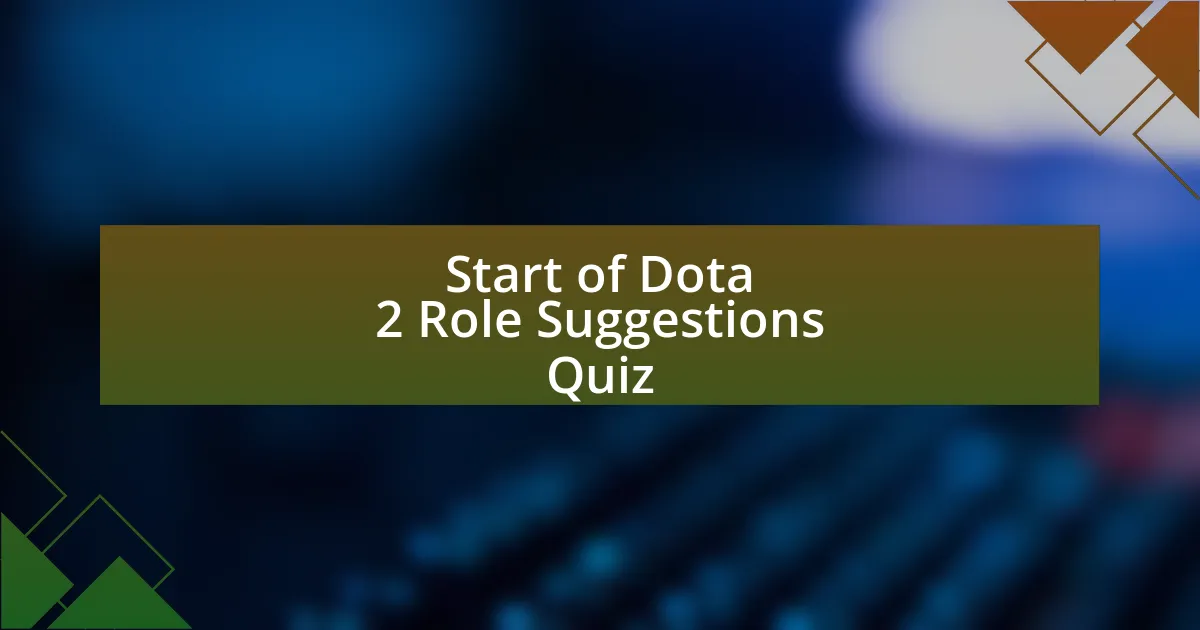
Start of Dota 2 Role Suggestions Quiz
1. What are the five primary roles in Dota 2?
- Carry, Midlaner, Offlaner, Soft Support, and Hard Support.
- Seeker, Fighter, Rogue, Scout, and Healer.
- Assassin, Wizard, Guardian, Paladin, and Warrior.
- Mage, Duelist, Tank, Support, and Sniper.
2. Which role is typically responsible for farming the most gold and experience on the map?
- Offlaner
- Hard Support
- Soft Support
- Carry
3. What is the main task of the Midlaner?
- To create impactful plays across the map and be effective at all stages of the game.
- To support the Carry hero by providing vision.
- To primarily focus on farming gold in the jungle.
- To roam around and secure runes exclusively.
4. Which role is usually initiators with abilities that can disable enemies?
- Soft Support
- Carry
- Offlaner
- Midlaner
5. What is the primary task of Soft Support during the laning phase?
- To farm the jungle and gain gold efficiently.
- To initiate fights and absorb damage for the team.
- To help the Carry farm effectively and create pressure on enemy heroes.
- To secure last hits and pressure the enemy Midlaner.
6. What is the main responsibility of Hard Support?
- To act as an initiator during team fights.
- To help the Carry farm, create pressure on enemy heroes, place and destroy wards, and maintain various consumables.
- To secure last hits and pressure the enemy hero.
- To become powerful through farming and scaling with items.
7. What is the significance of runes in Dota 2?
- Runes have no significant impact on the match and are just collectibles.
- Runes dictate the pace of the game and are crucial for controlling the map.
- Runes only affect the tower damage and do not influence hero abilities.
- Runes provide bonus gold to heroes and are mainly for farming.
8. Which role is known for having the least gold and experience?
- Hard Support
- Carry
- Midlaner
- Offlaner
9. What is the best way to move around the map quickly in Dota 2?
- Running away from enemies.
- Using Teleportation Scrolls.
- Using Boots of Speed.
- Waiting for the next team fight.
10. Why is it important for Carry players to protect wards?
- To gain kills and close out the game by maintaining vision.
- To stack jungle creeps for later farming.
- To initiate team fights and disable enemies.
- To farm gold and buy items for the team.
11. What is the primary role of the Offlaner?
- To secure runes and control the map vision.
- To get last hits, pressure the enemy Carry, and initiate fights.
- To support the team from a distance and heal allies.
- To farm as much gold as possible on the map.
12. Which role is known for being very flexible and able to move around the map?
- Hard Support
- Carry
- Soft Support
- Offlaner
13. What is the main difference between Soft Support and Hard Support?
- Soft Support focuses solely on farming the main lane.
- Hard Support can be aggressive and control the map like a Soft Support.
- Soft Support has more freedom of action on the map compared to Hard Support.
- Hard Support is more flexible than Soft Support in movement.
14. What is the significance of strong positioning for Hard Support players?
- To maintain a safe position and avoid getting jumped.
- To farm the most gold and experience.
- To initiate fights and lead the team.
- To deal the most damage in team fights.
15. Which role is best for beginners in Dota 2?
- Midlaner
- Carry
- Hard Support
- Offlaner
16. What is the primary task of the Midlaner during the laning phase?
- To secure last hits and pressure the enemy Midlaner.
- To purchase and place wards around the map.
- To roam and gank other lanes effectively.
- To farm jungle camps and avoid lane fights.
17. What is the role of the Carry in the late game?
- To initiate fights and absorb damage.
- To support teammates with healing abilities.
- To become powerful by scaling with items and gold.
- To control the map and secure objectives.
18. Which item is commonly used by Offlaners for mobility?
- Battle Fury
- Blink Dagger
- Yasha
- Phase Boots
19. What is the main responsibility of the Hard Support during the laning phase?
- To initiate fights and absorb damage for the team.
- To roam around the map and secure runes.
- To deal high damage and secure kills.
- To help the Carry farm and create pressure on enemy heroes.
20. How do Soft Support players assist in other lanes?
- By farming jungle camps and stacking neutral creeps.
- By focusing solely on protecting the Carry in the lane.
- By setting up kills with stuns and disables and roaming around the map.
- By gathering gold and experience in the opposing lane.
21. What is the significance of controlling runes in Dota 2?
- Runes exclusively heal heroes for a fraction of their health.
- Controlling runes helps dictate the pace of the game and allows for favorable engagements.
- Runes provide bonus damage for heroes in battles.
- Runes only provide gold and experience when collected.
22. Which role is known for having a high kill potential in the late game?
- Hard Support
- Offlaner
- Midlaner
- Carry
23. What is the primary task of the Offlaner during fights?
- To support the Carry exclusively during fights.
- To initiate fights and provide auras to benefit the team.
- To only focus on farming in the jungle.
- To avoid confrontation and play defensively.
24. How do Hard Support players maintain various consumables?
- By earning gold through kills and assists.
- By acquiring runes and controlling the map.
- By purchasing items with resources from farming.
- By keeping items like Dust of Appearance and Smoke of Deceit.
25. What is the significance of strong positioning for all roles in Dota 2?
- Strong positioning helps avoid getting jumped and maintain a safe position.
- Strong positioning guarantees victory in all team fights.
- Strong positioning increases the number of kills a player can secure.
- Strong positioning allows players to farm more resources in the jungle.
26. Which role is known for having a favorable matchup or threat kill?
- Midlaner
- Hard Support
- Carry
- Offlaner
27. What is the primary role of Soft Support in team fights?
- To primarily deal damage to enemies.
- To support only the Carry hero.
- To set up kills with stuns and disables.
- To tank damage for the team.
28. How do players on Position 4 (Soft Support) handle the start of the game?
- They fight in the mid lane to secure kills against enemy heroes.
- They farm the jungle to gain more gold and experience.
- They accompany the Offlaner on a hard lane and apply pressure on enemy heroes.
- They focus solely on warding and protecting their towers.
29. What is the main difference between Position 4 (Soft Support) and Position 5 (Hard Support)?
- Position 5 is always the one buying the team`s items.
- Position 5 focuses solely on farming the jungle.
- Position 4 has more freedom of action on the map compared to Position 5.
- Position 4 has no impact during team fights.
30. Which item is recommended for certain Heroes in Position 5 to maintain strong positioning?
- Manta Style
- Aghanim`s Scepter
- Black King Bar
- Force Staff
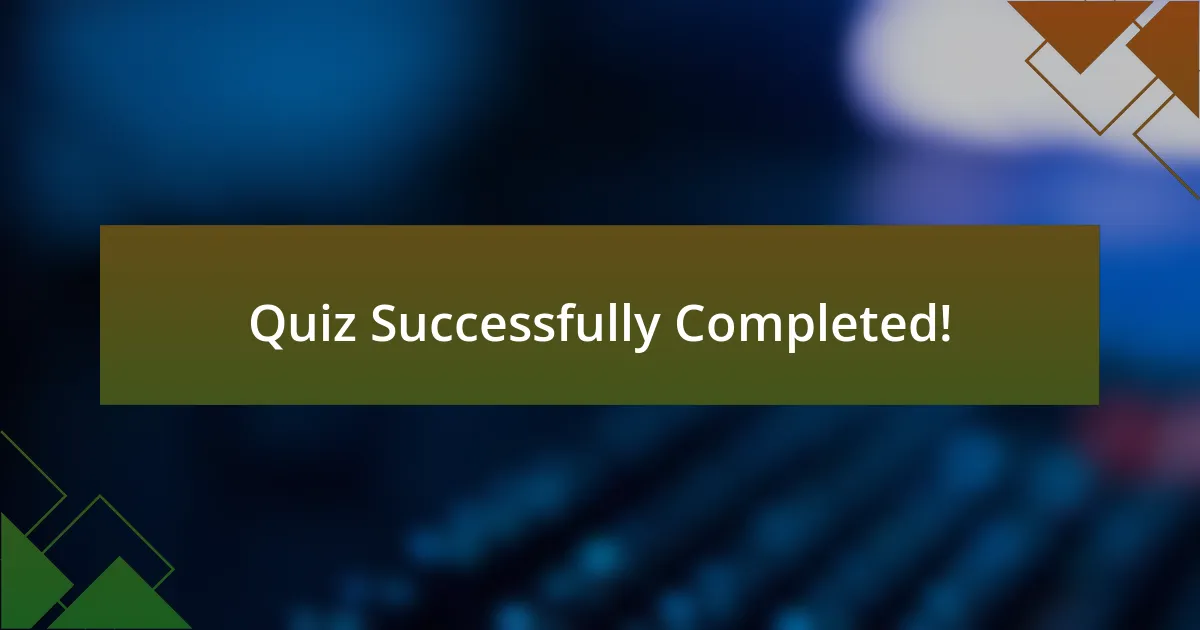
Quiz Successfully Completed!
Congratulations on completing the quiz about Dota 2 Role Suggestions! We hope you found the questions engaging and insightful. This quiz was designed not only to test your current knowledge but also to enhance your understanding of various roles within the game. From learning about the differences between carries and supports to understanding the nuances of offlaners, every insight adds to your gaming strategy.
Throughout the quiz, you may have discovered new strategies or general gameplay tips. Perhaps you learned how important synergy is among team roles or how the choice of a hero can impact your team’s overall performance. Each role plays a vital part in shaping the game dynamics and your decisions can lead to victory or defeat.
If you enjoyed this quiz, we invite you to explore the next section on this page that dives deeper into Dota 2 Role Suggestions. There, you will find detailed explanations and valuable resources that can further broaden your knowledge and improve your gameplay. Happy gaming!
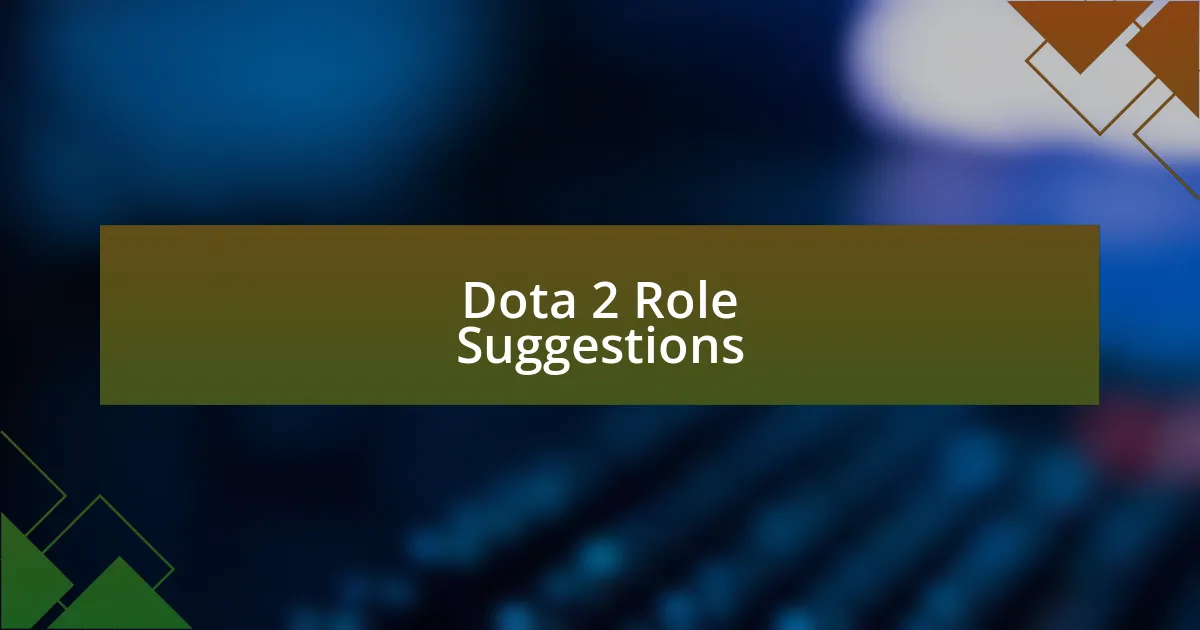
Dota 2 Role Suggestions
Dota 2 Roles Overview
Dota 2 features five core roles: Carry, Support, Offlane, Mid, and Jungle. Each role has distinct responsibilities that contribute to the team’s success. The Carry focuses on late-game damage potential, often needing farm priority. Supports assist the Carry and control vision through wards. Offlaners create pressure in the side lanes, while Mid players secure the strongest experience and item progression early. Jungle roles farm neutral creeps to gain gold and experience, aiding their team through ganks.
Detailed Breakdown of Carry Role
The Carry role is vital for securing late-game victories. Carries typically play safe lanes and rely heavily on gold and experience to scale. They need to farm efficiently, collecting items that enhance their damage and survivability. Carries, such as Anti-Mage or Faceless Void, often become the primary source of damage in the late game, requiring protection from supports during the early game.
Importance of Support Roles
Support roles are foundational to team strategy in Dota 2. They provide essential resources like healing and crowd control. Supports, such as Lion or Crystal Maiden, prioritize vision through warding and de-warding while enabling their team’s carries to farm effectively. They must excel in positioning and map awareness to effectively protect key allies and create opportunities for engagement.
Offlane Role Expectations
Offlane heroes are tasked with being disruptive and resilient. They are often placed in challenging lanes, facing multiple opponents. Offlane players like Tidehunter or Centaur Warrunner must absorb damage and create space for the team. Their ability to initiate fights or counter enemy aggression is crucial. Each offlaner’s survivability and ability to scale into a late game impact the team’s overall performance.
Mid Role Dynamics in Gameplay
The Mid role is unique, blending farming with aggressive play. Mid players, such as Shadow Fiend or Queen of Pain, have the potential to control the game through lane dominance. They gain early experience and gold, setting up rotations to assist other lanes. Their presence can shift the game’s momentum. Timing and skill in executing spells can decisively impact team fights and objectives.
What are the main roles in Dota 2?
The main roles in Dota 2 are Carry, Support, Mid-laner, Offlaner, and Jungle. Each role has specific responsibilities. Carry players focus on scaling power throughout the game, while Support players assist others and provide vision. Mid-laners control the pace of the game, Offlaners often create space and disrupt enemy strategies, and Jungle players farm neutral creeps to gain gold and experience. These roles are foundational to team composition and strategy.
How do I choose a role in Dota 2?
To choose a role in Dota 2, consider your playstyle and preferences. Evaluate if you like aggressive gameplay or strategic support. Assess your comfort with hero mechanics—if you excel at last-hitting and farming, you might prefer Carry. If you enjoy team fights and providing assistance, Support could be ideal. Matches played can also inform your strengths in specific roles, helping you find your best fit.
Where can I find guides for Dota 2 roles?
You can find guides for Dota 2 roles on various platforms, including community websites like DotaBuff, Liquipedia, and the Steam Community. YouTube channels and Twitch streams also provide insights and strategies tailored to each role. These resources offer detailed explanations of role mechanics, hero choices, and gameplay strategies, enhancing your understanding and performance in the game.
When should I switch roles in Dota 2?
You should consider switching roles in Dota 2 when you feel unproductive or frustrated in your current role. If your team composition requires a different role for optimal synergy or if you want to focus on improving specific skills, making a change can be beneficial. Additionally, consider your success rate in different roles and the comfort level you feel while playing various heroes.
Who are the top heroes for each role in Dota 2?
Top heroes for each role include Anti-Mage and Spectre for Carry, Lion and Crystal Maiden for Support, Invoker and Shadow Fiend for Mid-laner, Tidehunter and Timber Saw for Offlaner, and Enchantress or Chen for Jungle. These choices reflect current meta trends and hero performance in professional tournaments, where they demonstrate strong win rates and effectiveness in their respective roles.



